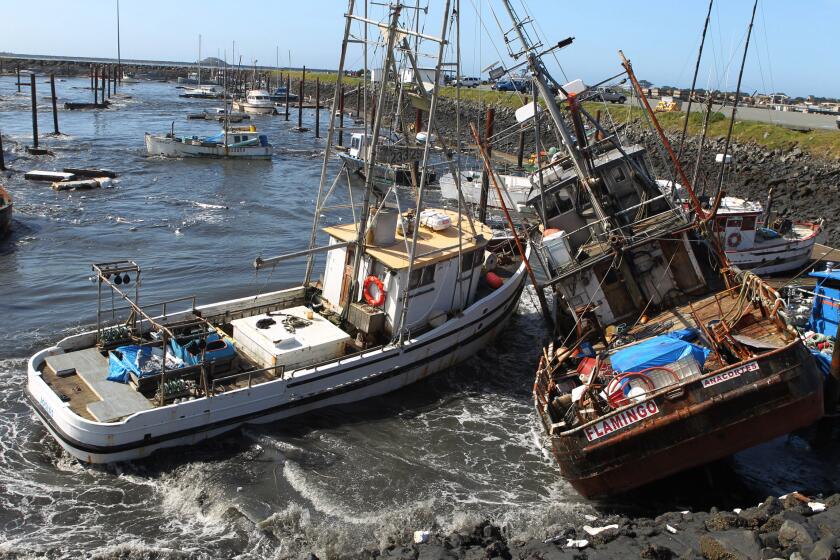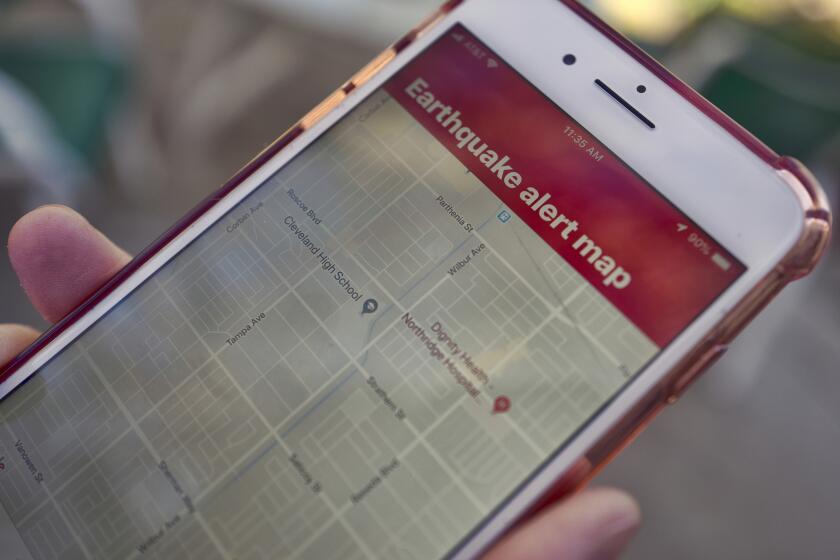S.F. Disaster Jolts Officials in Memphis Into Preparing for Their Own Big One : Earthquakes: Experts warn that a major temblor is on the way. But a fight looms over new building code requirements.
- Share via
MEMPHIS, Tenn. — If The King ever does show up back here in his hometown, he’d better be careful. Graceland hasn’t been earthquake-proofed.
But Elvis Presley’s old mansion--the biggest tourist attraction in this city along the Mississippi River--is hardly alone.
Nothing else in Memphis is ready for the Big One either, even though this city lies close to the site of the most powerful earthquake in American history and sits almost directly atop one of the biggest earthquake fault lines in the United States.
Memphis--like most cities in the central United States--has no building code requirements to guard against earthquakes. Developers in Memphis have been successfully fighting such “seismic” building code requirements for years, arguing that they would add huge costs to new construction while protecting against a threat of which most here are only dimly aware.
Only now, in the wake of the World Series quake in San Francisco, has the seismic code issue been revived. After inspecting the damage to the Bay Area, Memphis Mayor Richard Hackett returned home and announced he would push a long-delayed seismic code into law by the end of the year.
“It’ll be a tough one to sell, it won’t be politically popular,” Hackett spokesman Ray Pohlman admitted.
“It’s never been a hot issue before. But the San Francisco quake is forcing it to be a big issue now.”
The new code may come just in time, earthquake experts here say.
A serious earthquake in Memphis is on the way--and soon--seismologists warn.
In fact, Memphis is at greater risk of suffering a major earthquake sometime in the next few years than any other urban area in the eastern half of the United States. There is a 40% to 63% probability that a quake of at least 6.0 magnitude will hit Memphis within the next 15 years, according to Arch Johnston, director of the Center for Earthquake Research at Memphis State University.
Yet, today, the city is almost completely unprepared for it. “Our risk to people and buildings from an earthquake is high . . . because we’ve taken virtually no precautions here,” Johnston warned. He added that most public schools in the city are built of “old, unreinforced masonry, which engineers will tell you is the worst possible construction in the event of an earthquake. If we had a quake during the school day, many of our casualties would be children.”
The complacency about earthquakes in Memphis reflects a broader sense among most Americans that only Californians need worry about quakes. But, although California rightly grabs the headlines as America’s earthquake capital, other regions of the nation are hardly immune.
“If you asked people in Memphis where earthquakes occur, they would say California,” noted Harvey Ryland, executive director of the Memphis-based Central States Earthquake Consortium, which was formed in 1983 to increase awareness among builders and residents in seven central states of the threat from earthquakes. “Most of them don’t know (earthquakes) can happen right here in their own back yards.”
Indeed, the most powerful earthquakes ever to hit the continental United States happened here in the Mississippi River Valley, along what seismologists have dubbed the New Madrid Fault.
Three quakes, with an epicenter near the small farming town of New Madrid, Mo., about 70 miles north of Memphis on the Mississippi River, hit in rapid succession during the winter of 1811-1812 with more fury than the 1906 quake that devastated San Francisco.
The quakes--estimated to have been between 8.6 and 8.9 magnitude--packed such force that they briefly reversed the course of the Mississippi, created a major new lake that still exists, rang church bells in Boston and knocked down construction scaffolding around the Capitol in Washington. The tremors could be felt over 1 million square miles.
“All nature seemed running into chaos,” recalled one Frenchmen who was traveling down the Mississippi when the first earthquake hit in December, 1811. Throughout the winter in New Madrid, the ground shook incessantly, “like the flesh of a beef just killed,” wrote one resident.
But the area was so sparsely populated then that only a few people were killed--mostly passengers on small boats swallowed up by the raging river--and the region hasn’t been hit by a comparable quake since.
So, although less severe quakes, at 5.0 or below, occur regularly--about 200 barely detectable quakes hit along the New Madrid Fault each year--few people in the Memphis area take the threat of a major quake seriously.
“There’s no memory of a big quake here, that’s the problem,” said Jeff Crenshaw, director of the Memphis-Shelby County Emergency Management Agency. “Our problem is that we don’t have them often enough for people to know what to do.”
As a result, a quake in Memphis like the one that recently hit the Bay Area could lead to a greater loss of life, because people don’t know what to do and buildings haven’t been reinforced. In addition, the damage here would extend over a larger region, because of the Mississippi River Valley’s soft soil, which transmits seismic energy more easily than does the thick rock just below the surface in California.
The San Francisco quake has led political leaders here to start taking earthquake warnings seriously. Earlier this week, Rep. Harold E. Ford (D-Tenn.) wrote a letter to Mayor Hackett calling for a halt in the construction of the “Great American Pyramid,” Memphis’ huge new pyramid-shaped sports complex, until it can be earthquake-proofed.
“It’s tragic, but the San Francisco quake has done more to make people aware of the threat than anything else,” Crenshaw observed. “Now, I’m getting calls from the City Council members saying they want to support us” in earthquake preparations.
More to Read
Sign up for Essential California
The most important California stories and recommendations in your inbox every morning.
You may occasionally receive promotional content from the Los Angeles Times.










